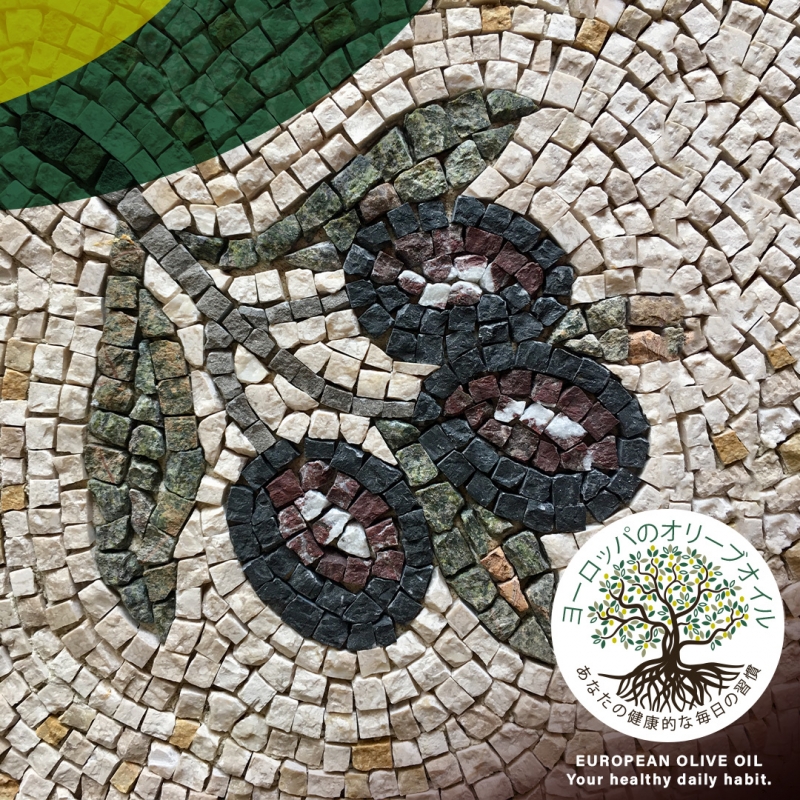‘Olio di Roma PGI’ is officially registered

Roman olive oil, one of the oldest and most valuable in the world, has obtained the recognition of the ‘Protected Geographical Indication’ mark (PGI) (here is the official document of the European Union in English https://bit.ly/2WS9m85).
Its name is "Olio di Roma PGI" and it represents a valuable recognition for the highly precious and world-renowned “oil of the ancient Romans”
It should be highlighted that for a product to be recognized as PGI, at least one of the phases of production, processing and/or elaboration of the product must take place within a determined geographical area. Only foods and ingredients with unquestionable quality and reputation, linked to a geographical area, can be recognized as PGI.
"The denomination Olio di Roma will encompass 316 municipalities in Lazio: 107 in the territory of the Metropolitan City of Rome Capital, 27 in the province of Latina, 35 in the province of Rieti, 60 in the province of Viterbo, 87 in the province of Frosinone for a total production of about 75,000 tons of olives and 10,550 tons of oil each year, and an economic value of almost 52 million euros". This data is provided by the Italian National Confederation of Direct Farmers (Coldiretti), the largest trade association of the Italian agriculture sector that represents as many as 1.6 million farmers.
With the recognition of the Olio di Roma PGI, ‘Made in Italy’ extra virgin olive oils confirm Italy’s top spot as the country with the highest number of registered denominations in Europe.
Only in Lazio, there are 4 registered PDOs, namely: the extra virgin olive oil "Canino", "Sabina", "Tuscia" and "Colline Pontine".
Rome, the capital of the world, is now also the capital of olive oil. A place whose culture, heritage and food reach people all over the world. Japan is one of the countries that appreciates the quality of Roman oil the most. The positive health effects of olive oil have been proven many times by the scientific community and are rooted in the natural and centuries-old techniques to produce this flavorful product - even more so today, with the PGI mark officially registered by the EU.
In his Naturalis Historia, Pliny the Elder wrote: "There are two liquids which are particularly pleasing for the human body: wine on the inside and oil on the outside. Both are excellent natural products, but oil is necessary, and men were not wrong to dedicate their efforts to cultivate it".
The prestigious magazine "Historian" by National Geographic (NG) well summarizes the uniqueness of ancient Roman oil and the historical contribution that Romans gave to the development of the cultivation and processing techniques of cultivation to obtain the so-called ‘liquid gold’
As María José Noain writes in his report NG, oil was "an indispensable product in the daily life of the ancient Romans who not only used it as a condiment in the kitchen but also as fuel for lighting and as an ointment in the baths. The production of oil can be traced back to the Phoenicians and the Greeks, but the Romans must be credited with having transformed it into a substance commonly used by all social classes for different purposes.
"Oil - the report continues - was a fundamental element of the Roman diet. Marco Gavio Apicio, in his famous recipe book De re coquinaria, mentions it in more than three hundred recipes. It was used for seasoning, cooking and frying and it was also a basic ingredient in the preparation of sauces. Moreover, before serving a dish, whether fish, meat, vegetables or legumes, oil was often used as a finishing touch. Romans even used it for baking. A recipe by Apicius recites: 'Toast pine nuts, peeled walnuts; mix with honey, pepper, garo, milk, eggs, a little pure wine and oil'".
"An indication of the importance of oil in the Roman diet is that Julius Caesar incorporated it into the annona: a free supply of grain that was given to the army. From then on, the oil demand increased dramatically. The presence of this product among the soldiers stationed at the northern border of the Empire also indicates that the peoples of central and northern Europe were incorporating it into their diet", reports National Geographic.
These days with the entire world watching the Olympic Games in Tokyo, it shall be remembered that "those who practised physical exercise in the Roman hot springs anointed their bodies with oil before training in the arena or in the gymnasium".
Olio di Roma PGI is a symbol that represents centuries of history and culture.
The European Union mark now makes this incomparable product recognizable: olive oil is produced with care and love and undergoes strict quality checks before arriving on your kitchen table.
From Rome to the rest of the world, the best oil in history.
Sources:
●
https://www.coldiretti.it/economia/ue-con-lok-alligp-roma-litalia-e-leader-mondiale-dellolio●
https://www.facebook.com/ColdirettiLazio/posts/3012738112296594●
https://www.storicang.it/a/lolio-doliva-sostanza-multiuso-degli-antichi-romani_14928 10 August 2021







 Roman olive oil, one of the oldest and most valuable in the world, has obtained the recognition of the ‘Protected Geographical Indication’ mark (PGI) (here is the official document of the European Union in English https://bit.ly/2WS9m85).
Roman olive oil, one of the oldest and most valuable in the world, has obtained the recognition of the ‘Protected Geographical Indication’ mark (PGI) (here is the official document of the European Union in English https://bit.ly/2WS9m85).